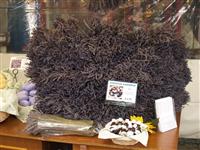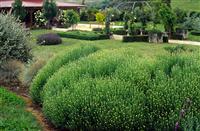

An in-depth study of herbs - their culture, propagation and use.
If you are passionate about herbs and would like to make it your career - then this course of study will help you on your way.
This course has been operating for years and is designed for people who are involved, or wanting to become involved in the business of herbs. It covers less horticulture and focused more strongly on herbs than the Certificate in Horticulture -Herbs. This course is more appropriate for the small business operator who not only grows herbs but also harvests and value adds (eg. perhaps producing herb products).
Ideal for anyone wanting to make a serious business or career from herbs as:
- A herb grower (producing dried herbs, herbal oils, fresh cut herbs, etc)
- A herb manufacturer (growing and/or producing herb products -edible, culinary or aromatic)
- A herb marketer (eg. herb shop owner, herb product distributor)
- A herb nursery proprietor
- A landscape designer or contractor, specialising in herb gardens
Learn from a team of international experts.
|
 Principal: John Mason Experienced herb grower & nurseryman, author of 3 herb books,designer of dozens of herb gardens. Principal: John Mason Experienced herb grower & nurseryman, author of 3 herb books,designer of dozens of herb gardens.
|
 Tutor: Maggi Brown Renowned UK expert on organics and herbs, former education officer with Garden Organic Tutor: Maggi Brown Renowned UK expert on organics and herbs, former education officer with Garden Organic
|
 Tutor: Adriana Fraser - author, teaches students herb identification, culture and propagation using her extensive herb gardens. Tutor: Adriana Fraser - author, teaches students herb identification, culture and propagation using her extensive herb gardens.
|